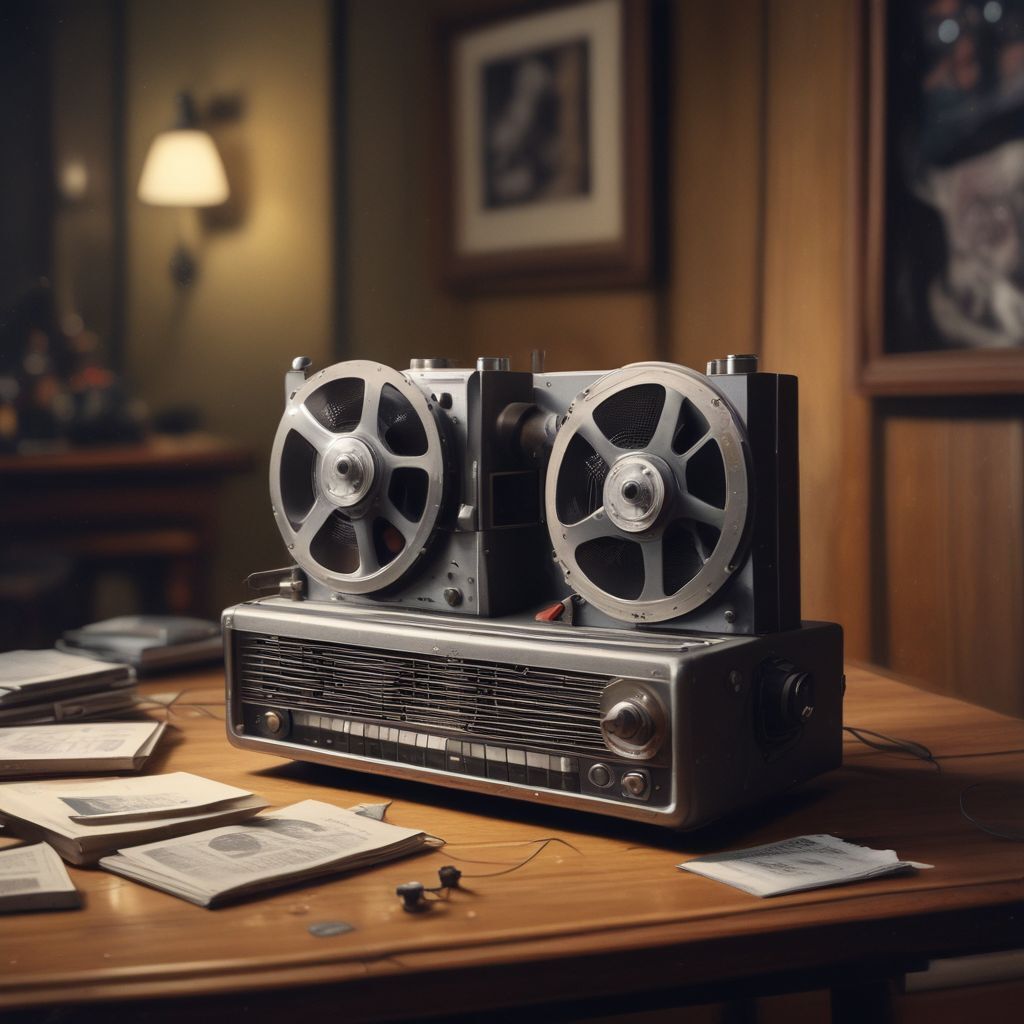The village of Glenmoor lay buried in mist almost all year round. Nestled deep within the Scottish Highlands, it was the kind of place that didn’t appear on modern maps and had no cell signal. Glenmoor was ancient—older than the roads that reached it—and held onto its secrets as tightly as it held onto its fog.
For Dr. Elsie Marrin, a sound archivist from Edinburgh University, it was supposed to be a quiet retreat—a sabbatical spent studying forgotten Gaelic folk songs preserved in dusty tapes at the local heritage center. The center itself was an old church, converted after the congregation faded and the last sermon was given in 1973. The tapes, donated by an eccentric linguist named Dr. Fergus Ainsley, hadn’t been catalogued since his death three decades ago.
It began with a reel labeled only with a date: October 17, 1968.
Elsie threaded it into her reel-to-reel player. A hiss filled the room, then the crackle of wind. And then—
A voice. Male. Breathy. Urgent.
“If you’re hearing this, I am already gone.”
Elsie sat up.
“They said sound dies, but that’s not true. It lingers. Echoes. Especially here. Especially when blood is spilled.”
The voice was unmistakably Scottish, but strangely accented, as if trying to hold back something primal.
“Don’t trust the water. Don’t trust the bells. And for God’s sake, don’t go to the Glen at night.”
The tape ended with a shrill tone, almost like feedback, but deeper… a growl that resonated in the bones.

Curious and unnerved, Elsie asked the center’s caretaker, a wiry woman in her sixties named Moira, about the recording.
Moira turned pale. “You played that?” she whispered. “No one’s touched Ainsley’s final reel in decades. He recorded it two nights before he vanished.”
“Vanished?”
“Went into the Glen on a foggy night. They found his boots by the old stone circle. Never found his body.”
Elsie, a skeptic by nature, chalked it up to local folklore. Still, the tape stuck with her. There was something in the voice—something terrified. She spent the rest of the day combing through Ainsley’s notes, discovering references to “auditory hauntings” and “acoustic residues” left by trauma.
The next night, the bells began to ring.
The church’s bell tower had been sealed shut for years. Moira swore it hadn’t worked since the 80s.
Elsie climbed the stairs, flashlight in hand. The bell swung gently, creaking as though pushed by invisible hands. The air was freezing, and the smell—wet iron and moss—clung to her skin.
She saw it then: a smear of blood on the clapper.
Back in her room, shaken but determined, Elsie played the tape again.
This time, after the final warning, there was something new—faint in the background: whispering.
She isolated the channel, amplified the frequency.
The whispers were in Gaelic, but she recognized the words: “Return what was taken.”

The next day, she visited the stone circle.
The Glen was silent, save for the wind. The standing stones were ancient, worn smooth, each carved with runes and spirals. In the center, a rusted tin box half-buried in moss. Inside: old photos, a pocket watch, a silver comb… and a cassette tape.
That night, she played it.
It was a recording of Ainsley. Singing.
But not just singing—chanting. The same verse, over and over. A lullaby. His voice trembling.
“Dùin do shùilean, a ghrian bheag bhàn,
Fuirich sàmhach ‘s èist ri m’ guth…”
Close your eyes, little white sun,
Stay quiet and hear my voice…
There were footsteps on the tape. Then screams. Then—nothing.
Elsie couldn’t sleep. The whispers came even with the tape off, echoing faintly from the walls. She checked the reel again. New sounds had appeared: thumping, dragging, distant sobbing.
Each night, more sounds emerged.
She began to believe Ainsley’s theory—sounds did not always die. Especially traumatic ones. They lingered. And they were building.
Moira found her the next morning pacing outside the church.
“I found the original journal,” Moira said, handing her a leather-bound book. “Ainsley’s. He wrote about a ritual. Said he made a mistake—recorded a song that shouldn’t be sung.”
The song, Ainsley believed, was a ward—meant to keep something contained within the Glen. When played backward, the lullaby became a summoning.
He had reversed it. Just once. For curiosity.
The Glen hadn’t been silent since.
Elsie made a plan.
She would return the tape and the relics to the stone circle. She would sing the lullaby—forward. And she would record nothing.
The night she went, the fog was thick, unnatural. The grass muffled her steps, and the stones seemed to pulse with a hidden rhythm.
She laid the items out, placed the cassette atop them, and began to sing.
Her voice cracked on the first verse. But the air stilled. The Glen seemed to listen.
Then—a whisper behind her.
“You shouldn’t have played it again.”
She turned. No one.
But she felt it: presence. The air pressed in. Cold wrapped her lungs.
She sang louder.
“Dùin do shùilean, a ghrian bheag bhàn…”
And the earth groaned.
A wind surged outward from the circle. The tape sparked, hissed, then melted. The whispering stopped.
The next day, Glenmoor was quiet.
The bell no longer rang. The church felt warmer. Even Moira admitted the fog was thinner.
Elsie archived the journal, the remaining tapes, and made one final note:
Sound carries memory. But memory, when weaponized, becomes haunting. This was not a ghost story. It was a warning. And like all warnings—someone will ignore it again.
She never returned to Glenmoor.
But sometimes, when she closes her eyes at night, she hears the last line of Ainsley’s tape—not the part about not trusting the water.
The other one:
“If you’re hearing this, I am already gone.”





